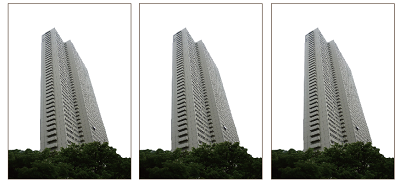Comment 2. Answer to question 2
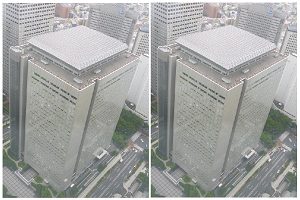
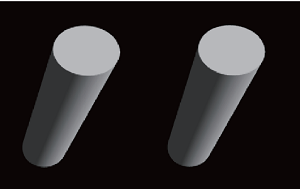 For a picture of a building taken from above, the vanishing point lied below the building. Hence, the left building appears to be tilted toward right more than the right picture.
(I took this picture from the vision desk at the top of Tokyo Metropolitan Government Building.)
For a picture of a building taken from above, the vanishing point lied below the building. Hence, the left building appears to be tilted toward right more than the right picture.
(I took this picture from the vision desk at the top of Tokyo Metropolitan Government Building.)
Comment 3. Illusions related to the viewpoint trick
The illusion of "Stretching out in the tub" was found by USA Scientist L. Maniatis (American University) in 2010. Her illusion was selected as one of the top 10 finalists at the Best Illusion of the Year Contest 2010."The Leaning Tower Illusion" was found by three Canadian scientists F. Kingdom, A. Yoonessi and E. Gheorghiu (McGill University) in 2007. They used the picture of the Leaning Tower of Pisa and won the first prize at the Best Illusion of the Year Contest 2007.
Comment 4. Viewpoint of a composite image
What 3D structure we perceive from a picture depends on the viewpoint from which we see the picture. This is important when we combine two or more images into one composite image. In order to make a projected completion photo by combining a picturte of an empty ground with a CG image of a designed building, we have to be careful so that the associated two viewpoints coincide. Otherwise, the resulting compsite image has no correct viewpoint.In the next example, the picture of the container was taken by a lens with a short focal length in the left and with a long focal length in the right, while the picture of the object was taken by a lens with a long focal length in the left and with a short focal length in the right. So the resulting composite images have no correct viewpoints. The left image may give an impression that the object is placed in relatively large space.
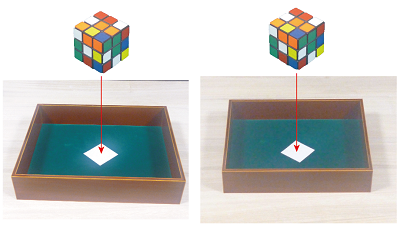
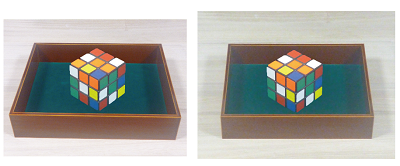
Comment 5. Reference on the viewpoint trick
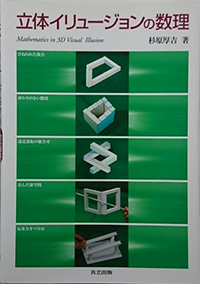 My book
My book K. Sugihara: Mathematics of 3D Optical Illusion. Kyoritsu Shuppan Publisher, Tokyo, 2006
discusses the importance of the viewpoint from which we see pictures and its implications.
Comment 6. Picture used in the lecture
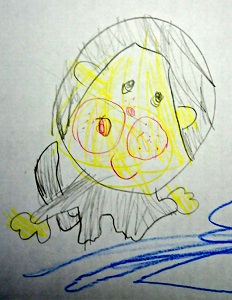 This picture was drawn by one of my granddaughters who visited my home in the weekend just before taking the lecture video.
This picture was drawn by one of my granddaughters who visited my home in the weekend just before taking the lecture video.
